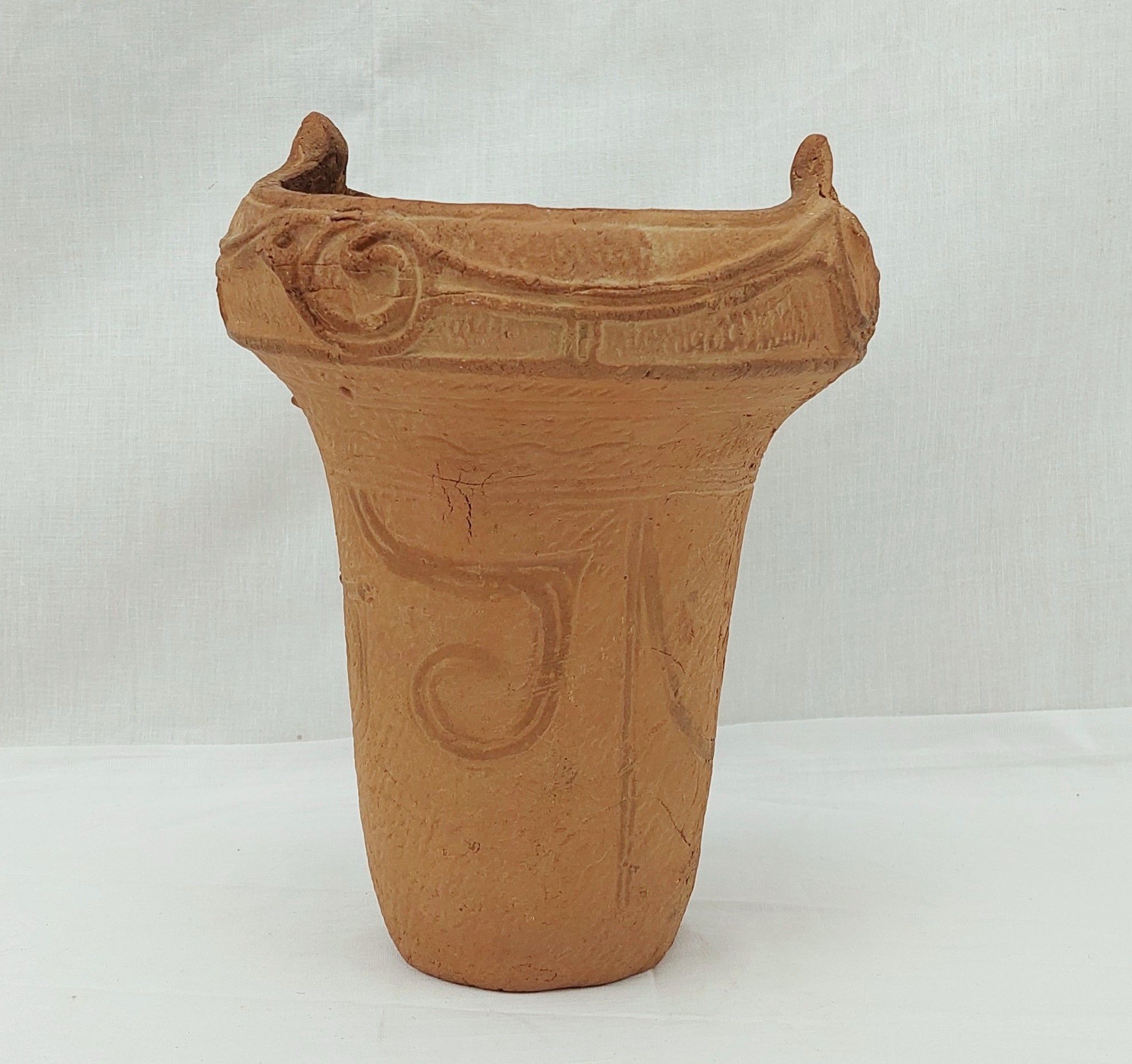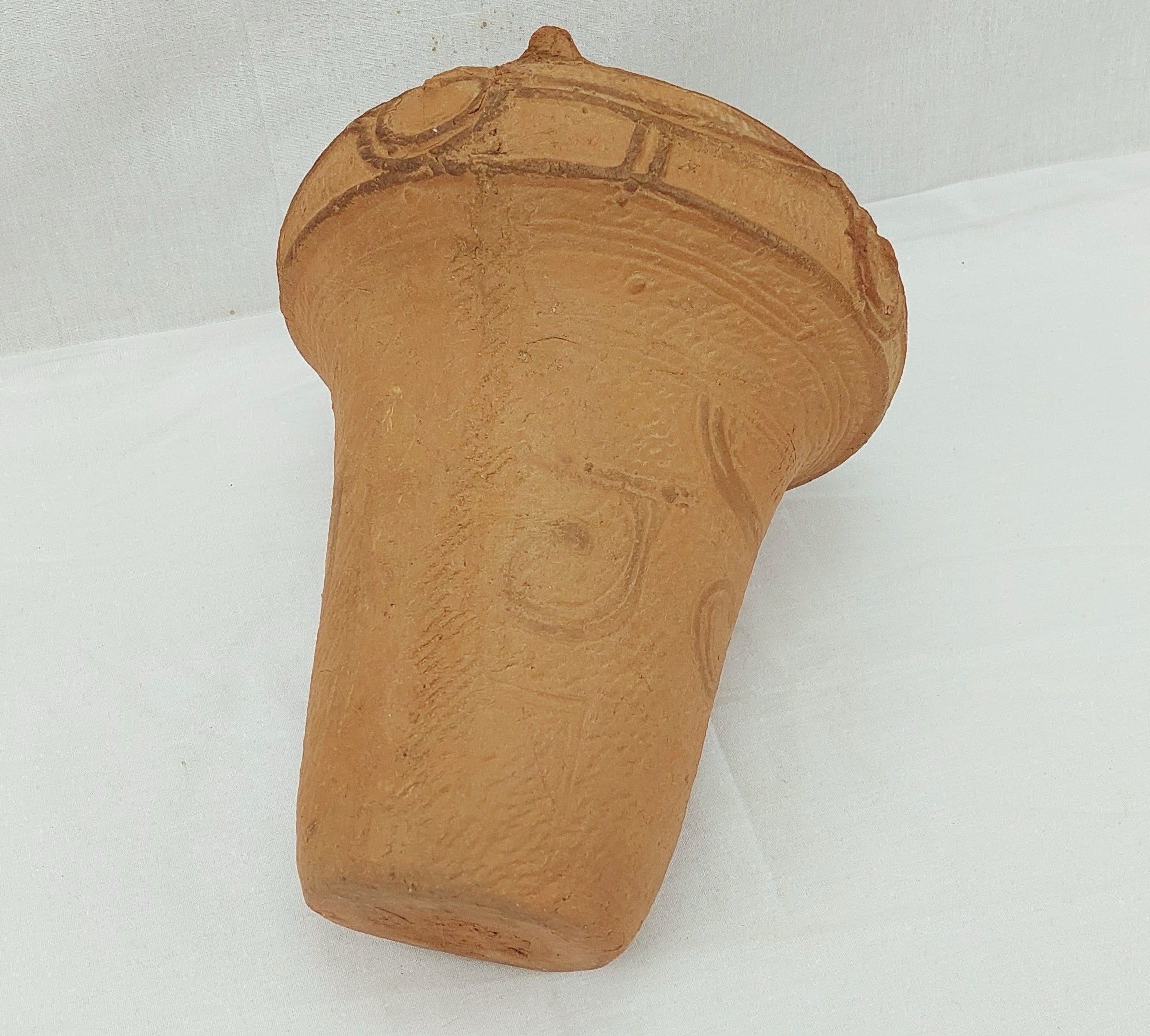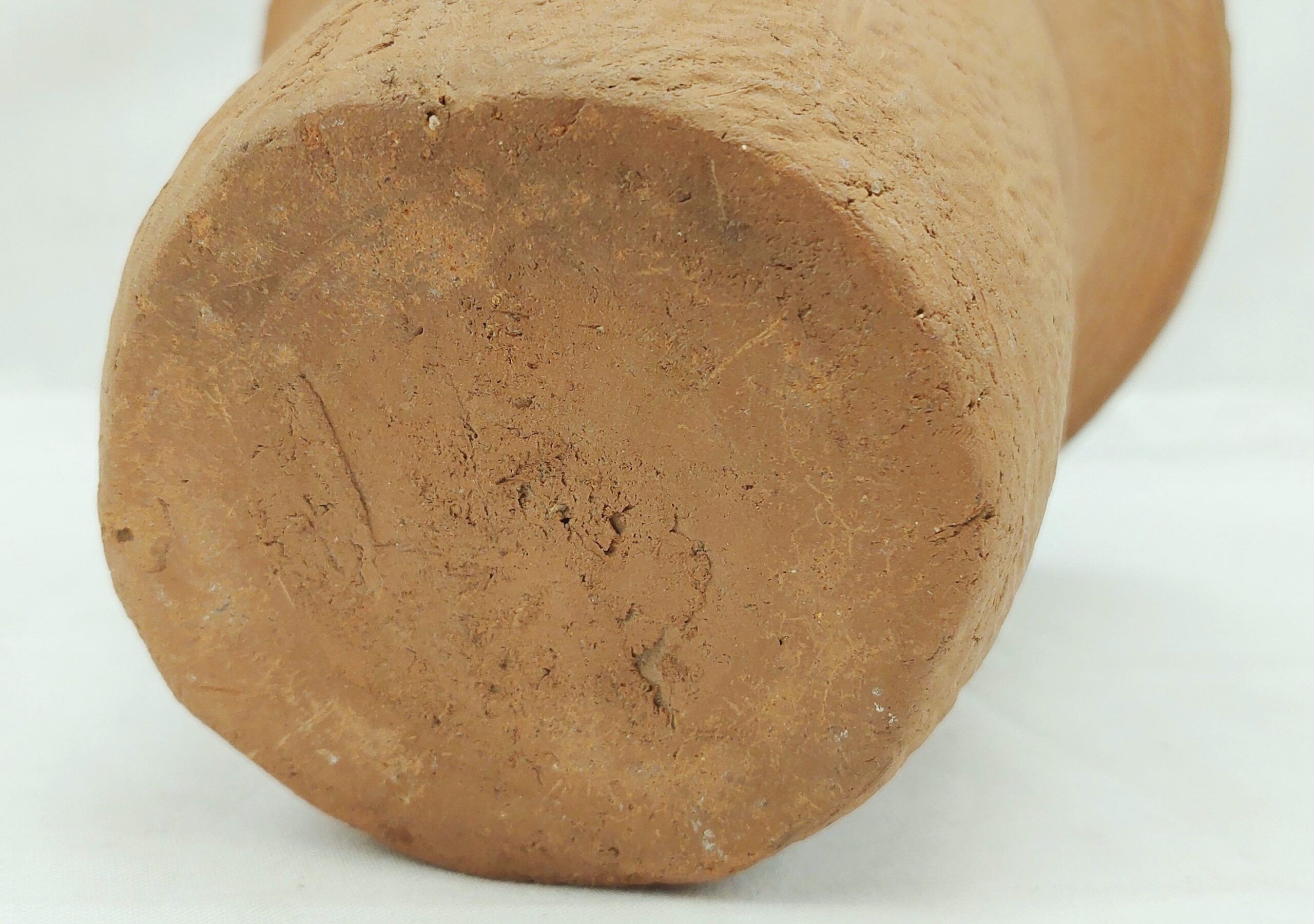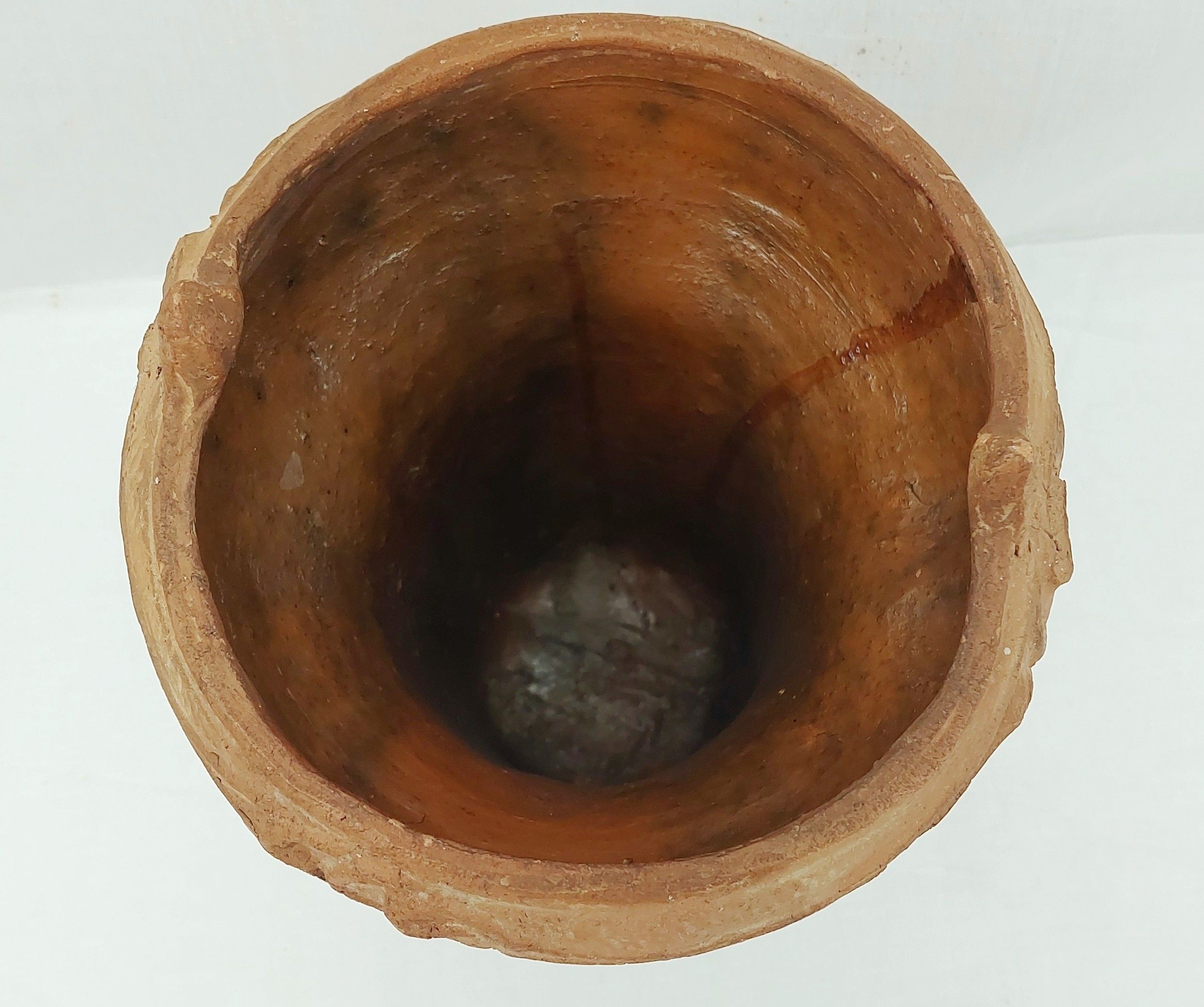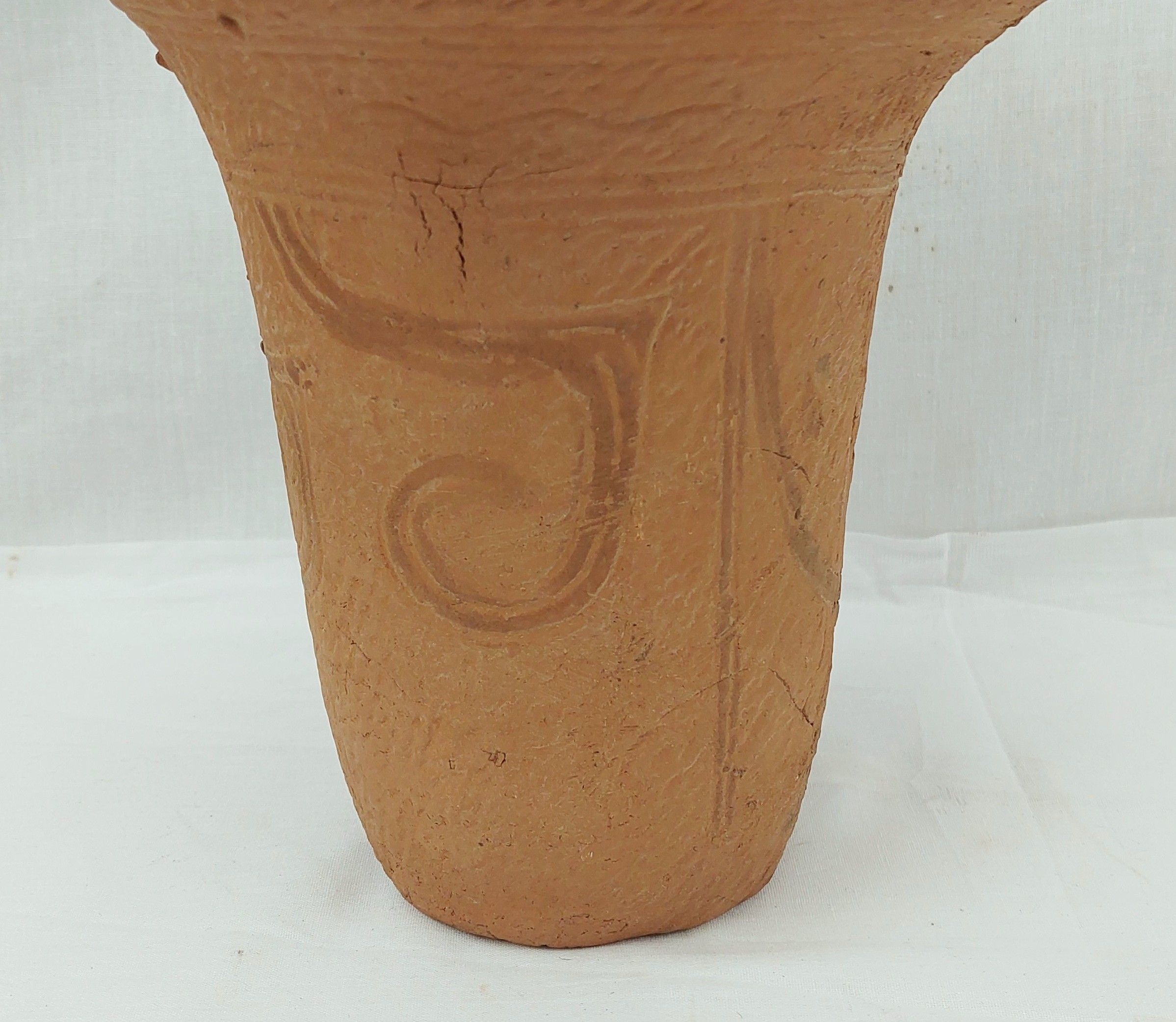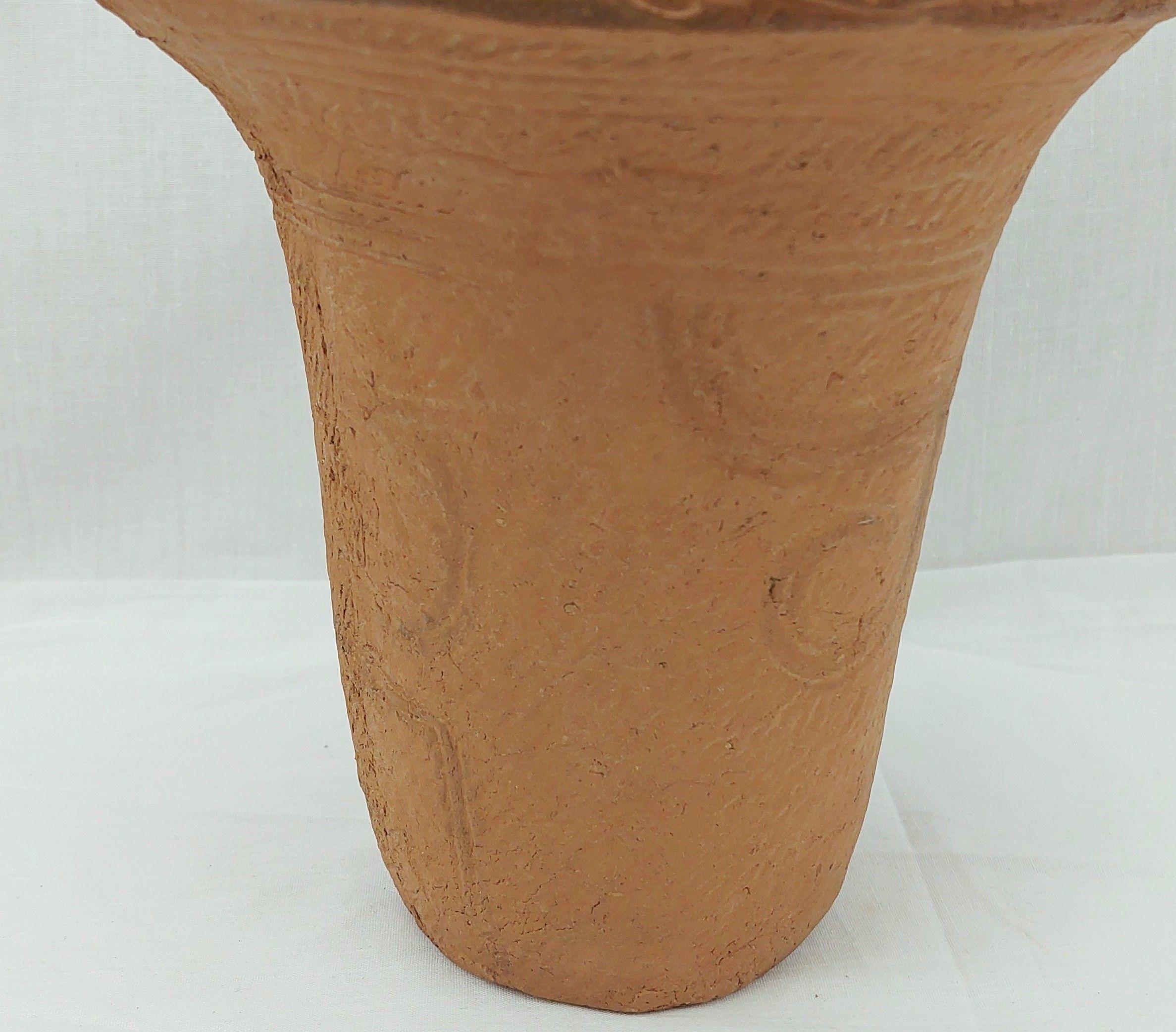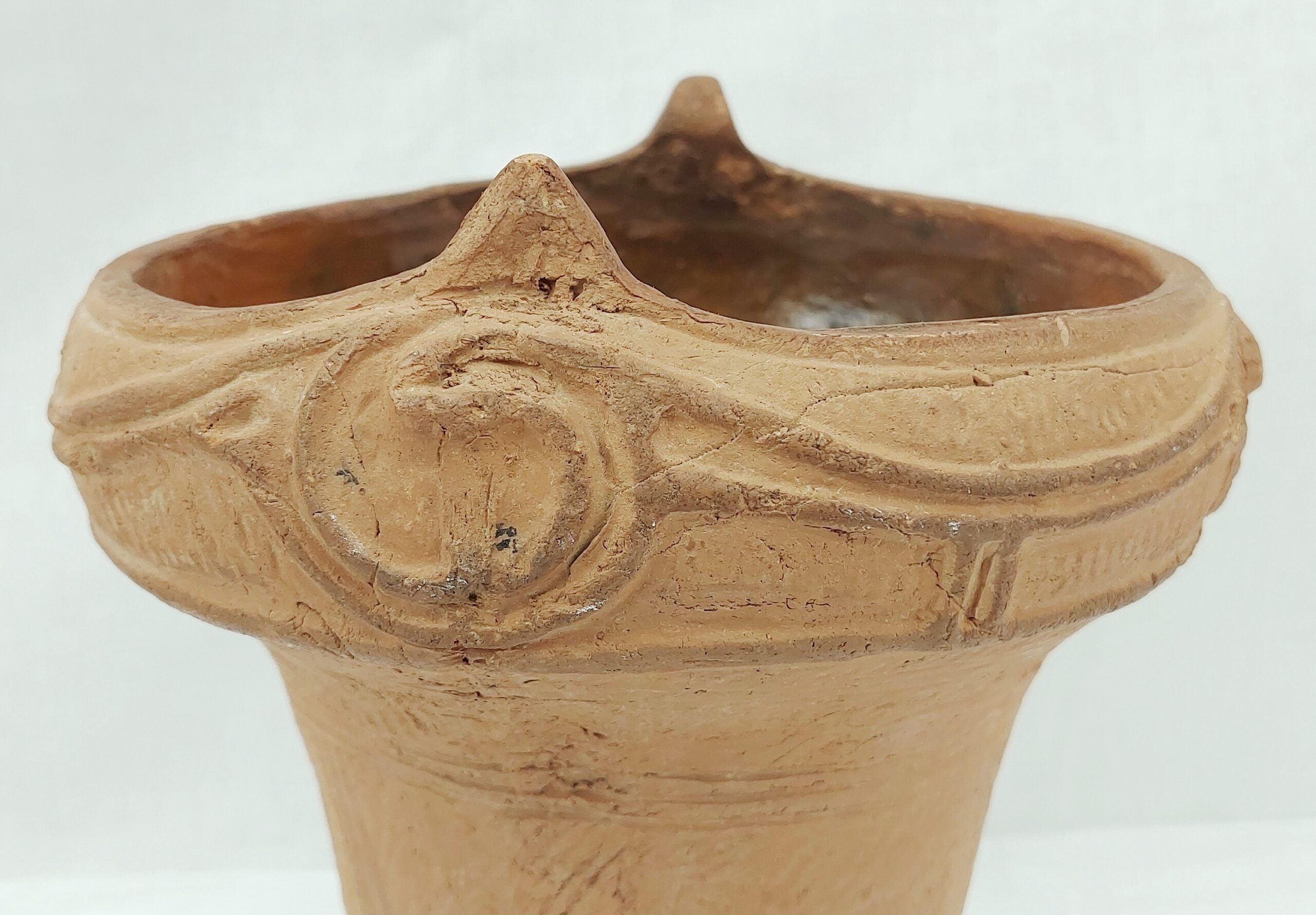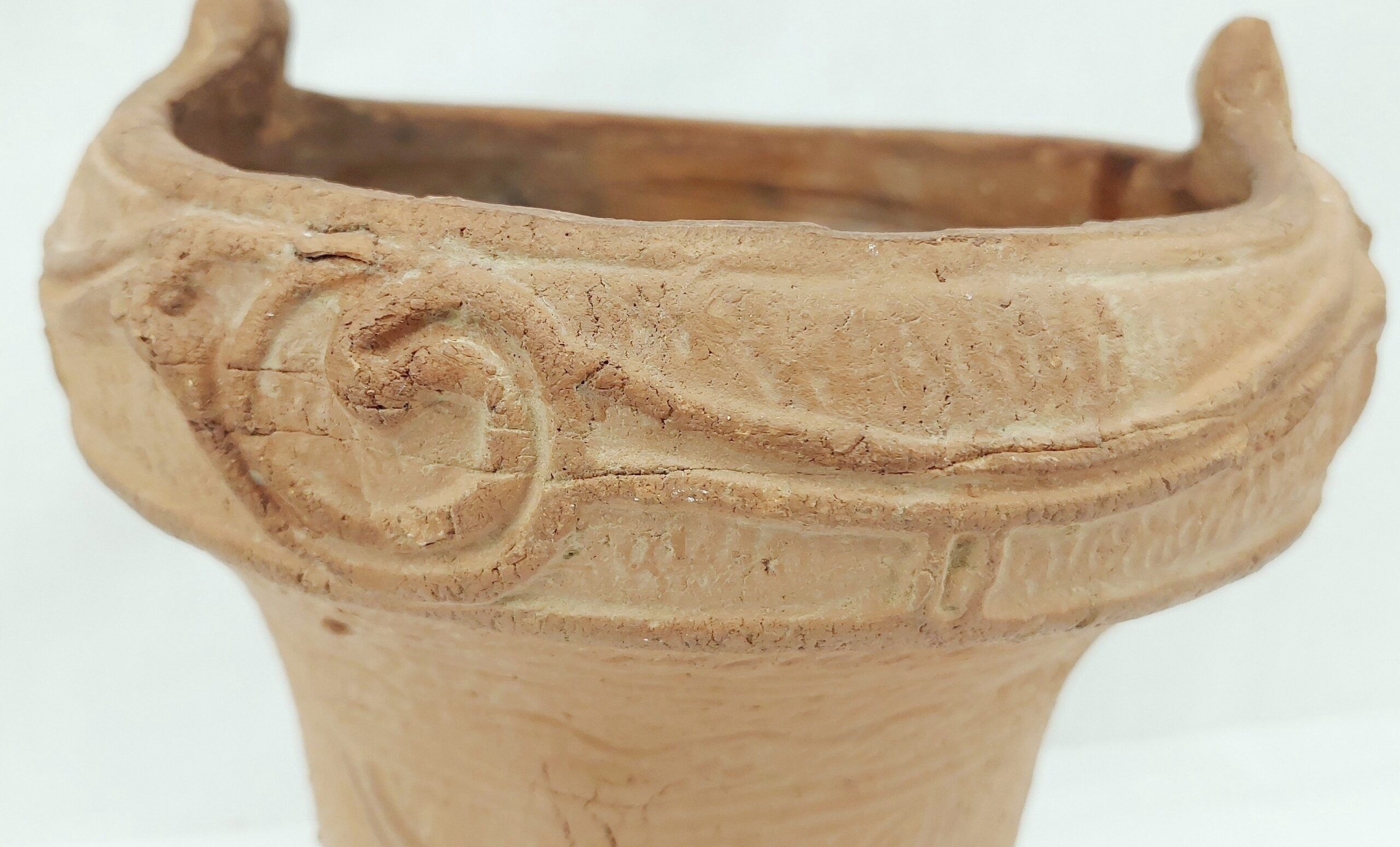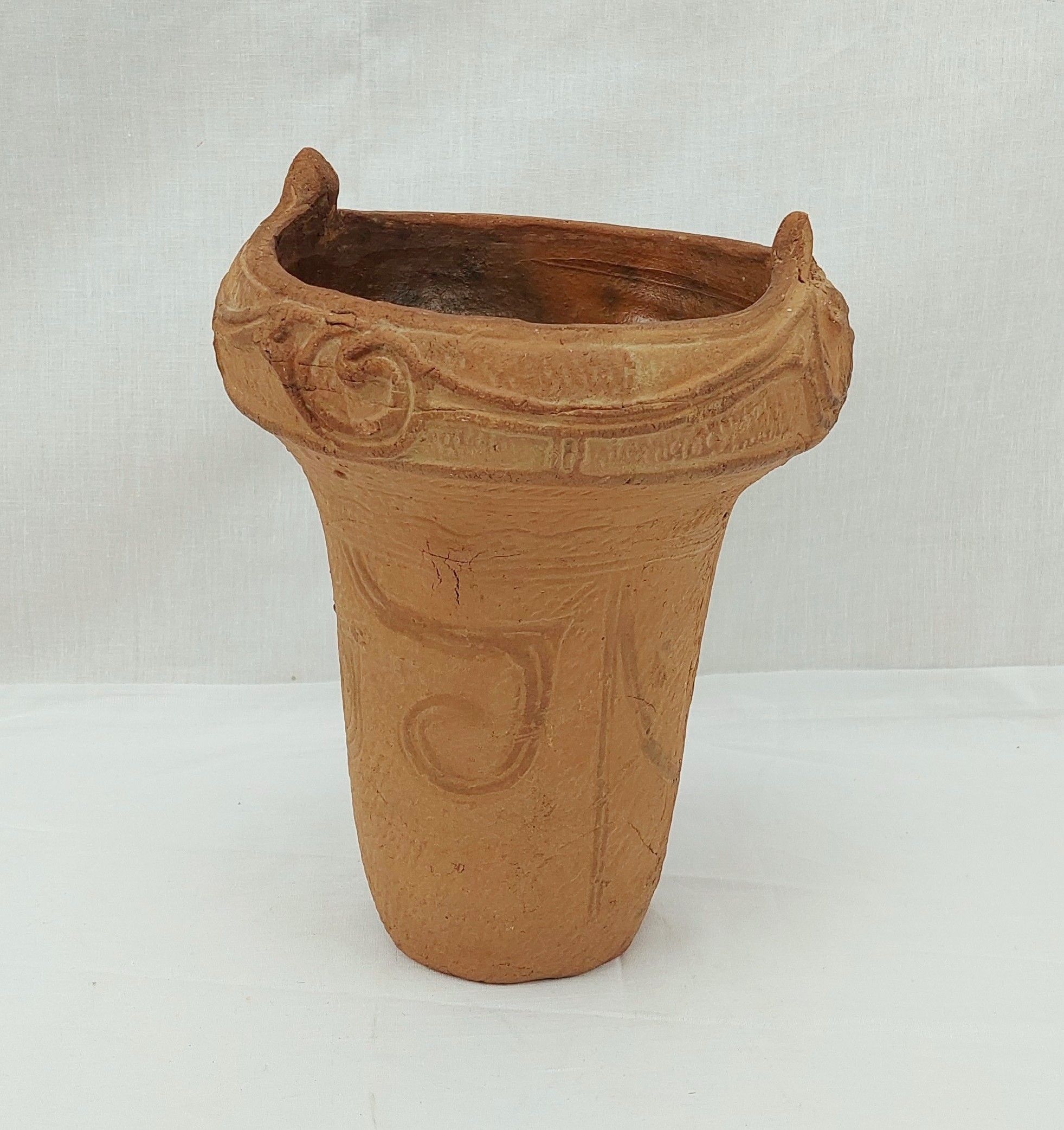~ Japanese Middle Jamon Period c3000 To c1800 BC Earthenware Jar ~
The Jōmon period, which encompasses a great expanse of time, constitutes Japan’s Neolithic period. Its name is derived from the “cord markings” that characterize the ceramics made during this time. Jōmon people were semi-sedentary, living mostly in pit dwellings arranged around central open spaces, and obtained their food by gathering, fishing, and hunting.
All Jōmon pots were made by hand, without the aid of a wheel, the potter building up the vessel from the bottom with coil upon coil of soft clay. As in all other Neolithic cultures, women produced these early potteries. The clay was mixed with a variety of adhesive materials, including mica, lead, fibers, and crushed shells. After the vessel was formed, tools were employed to smooth both the outer and interior surfaces. When completely dry, it was fired in an outdoor bonfire at a temperature of no more than about 900°C.
Middle Jōmon (ca. 2500–1500 B.C.)This period marked the high point of the Jomon culture in terms of increased population and production of handicrafts. The warming climate peaked in temperature during this era, causing a movement of communities into the mountain regions. Refuse heaps indicate that the people were sedentary for longer periods and lived in larger communities; they fished, hunted animals such as deer, bear, rabbit, and duck, and gathered nuts, berries, mushrooms, and parsley. Early attempts at plant cultivation may date to this period. The increased production of female figurines and phallic images of stone, as well as the practice of burying the deceased in shell mounds, suggest a rise in ritual practices.
~ Condition ~
Please refer to the images for the condition. There are signs of resoration work to the upper rim.
~ Dimensions ~
The piece is 23 cm (9 inches) tall with a maximum diameter of 17.5 cm (9 inches).


